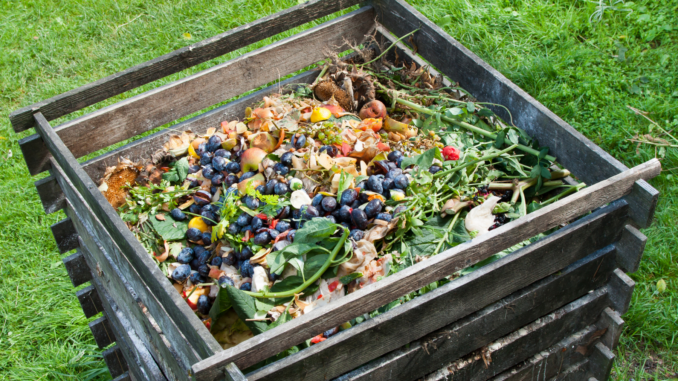
Bryan Fischer, Horticulturist, Gardens on Spring Creek
I routinely find myself peeved by the rampant misinformation surrounding composting. While most everyone is clear on the basics of the process, understanding seems to stop there. This article pair will focus on home composting (add-as-you-go composting), rather than batch composting, which differs somewhat in process and product.
The product of the gradual breakdown of food scraps (thanks to a complex community of invertebrates, fungi, bacteria, and more), compost has long been hailed as the “black gold” of the garden. Compost does indeed provide significant benefits to garden soils – it can provide a broad spectrum of essential plant nutrients, improve soil structure and composition, increase drought resistance in soils and provide a food source for beneficial soil life.
Realistically, however, composting will not eliminate the need for fertility inputs. Nitrogen, the element most commonly lacking in food crop systems, is largely lost to air and water during the composting process. For this reason, many gardens using compost must still supplement with a nitrogen supplement, like blood or alfalfa meals. A soil test, available through your local land-grant university (usually under $40) will provide detailed results and recommendations to optimize your soil’s nutritional and textural profiles and can also help minimize water-polluting nutrient runoff from excess fertility applications.
Due to water loss and the breakdown of complex, fibrous plant tissues, compost ends up being about a third less volume than its ingredient mix, effectively concentrating any compounds that remain at composting completion. For this reason, one must be cautious to only compost with low-salt inputs. Salts, found in high concentrations in some manures, can be difficult to remove from our clay-type soils and will stunt the productivity of many crops in the long term. The case against manure in compost grows stronger when one considers that some herbicides used on hay crops (aminopyralid, for example) can survive digestion in the guts of livestock as well as the composting process. These herbicides remain active for a few years after such compost is added to a garden. So, long story short: stick to mostly plant-based inputs from known sources to minimize the chances of your garden’s “black gold” becoming its own Black Death.
If I haven’t yet scared you away from compost and you are determined to divert the nearly 30 percent of the food that the average American throws away to something more helpful than methane production, now is a great time to consider where you might want to site your compost pile. A three-foot-by-three-foot site provides the ideal critical mass for compost piles if at least one side will allow for easy access. Such a pile should not be located near surface water or downspouts, as nutrients in compost – both unfinished and finished – can run off and pollute waterways. Also, avoid particularly hot locations. Your compost, after all, will be alive! So, use the next few days to consider locations for your pile. Next week, we will take a dive into the process of making and using compost.
Support Northern Colorado Journalism
Show your support for North Forty News by helping us produce more content. It's a kind and simple gesture that will help us continue to bring more content to you.
BONUS - Donors get a link in their receipt to sign up for our once-per-week instant text messaging alert. Get your e-copy of North Forty News the moment it is released!
Click to Donate
